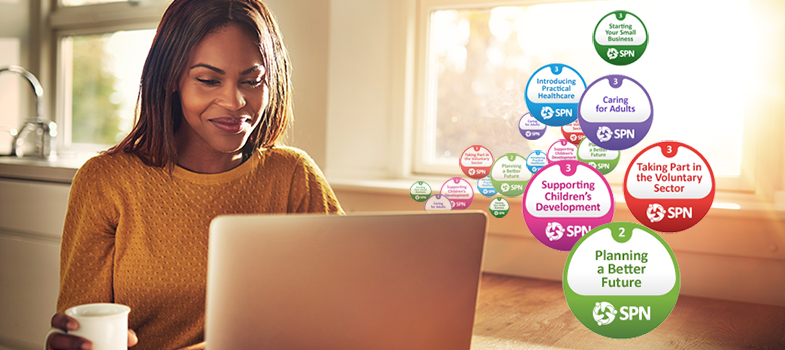2 Communication
Let us now look further at one of the ʿ6 Csʾ in more detail: communication. Good communication is important, both between your team and your patients. Only a small proportion of communication is verbal: when Robert was in pain or frustrated, he communicated those feelings through his behaviour rather than expressing how he felt in words. By observing Robert’s body language during a conversation, you might be able to see visible signs of his discomfort or pain. His healthcare team had to learn about his specific needs, however he chose to express them. By getting to know him as an individual, they would learn how best to support him, and speak or act in ways that both expressed empathy and understanding, and explained any treatment or care plan.
Now you are going to look at an example where there was a lack of good, basic communication between the patient and the healthcare assistant, who did not seem to be working in a very person-centred way.
Activity 6
As a healthcare assistant, one of the roles you might be asked to carry out is to record a patient’s blood pressure. This will alert you to any changes from previous readings, such as high blood pressure (hypertension), which puts extra strain on the heart and blood vessels.
As you watch the video, write down ways in which the healthcare assistant could have been more supportive and reassuring with the patient.
[This video is provided for use within the course only.]
Transcript: Measuring blood pressure
Comment
If this was the patient’s first blood pressure test, the healthcare assistant would normally describe to the patient how the blood pressure check would be carried out and why the blood pressure needed to be measured. She gave no reassurance to help the patient feel more relaxed, and should have explained that the cuff was going to tighten and there might be a bit of pressure. She could have checked that he was comfortable and his arm supported, though she did ask him to try and relax his arm. If a patient is particularly nervous it helps to suggest they visualise being in a nice place, to help them relax. Afterwards she just said the blood pressure was ok, with no explanation of what the figures meant and how they related to the ʿhealthyʾ scale.
The Open University and Unison Partnership website (2015) notes that ̔'communication is a two-way process and good communication is about being a good listener as well as a good speaker. You need to be empathic, so that you can understand how others will interpret your words and behaviour'. Communication therefore is an essential part of a caring relationship and helps to build trusting relationships with the individuals you care for as well as their families and other workers.
Communication occurs through many different means: verbal, visual or in written form. It will take up a large part of your day, and it is important to communicate effectively. Only a small proportion of communication (7%) is down to actual words. Indeed, in face-to-face conversations, over a third of communication is made up of the tone, pitch and speed of your voice (38%), and just over half of communication is non-verbal, comprising gestures, expressions, posture and other body language (55%). You are probably already familiar with a number of features of body language, including the movement of your body (for eample shrugging, nodding or shaking your head, waving), facial expressions, eye contact (showing that you are engaged and listening), and even your muscle tension and breathing.
The way you look, listen, move, and react to another person tells them more about how you’re feeling than words alone can. Think about when you communicate with others over technology and cannot see their non-verbal communication signs: such communication can be more difficult and meanings can be more easily misunderstood.
The following advice has been drawn up by The Open University and Unison:
Top tips on improving verbal communication skills
- Remember to let the other person get their thoughts across and try to not to interrupt them. Try to listen more than you speak in a conversation and give the other person your full attention.
- Be open and honest in what you say. If you are not, your body language may well give you away.
- Learn to express yourself well. It is not just what you say, but how you say it. Your tone of voice can sometimes change your meaning entirely.
- Always make sure the other person has understood you, or you them, and don’t be afraid to clarify an instruction or ask them to repeat a phrase.
- Alter your style of communication to match your listener (for example choice of words, tone of voice and familiarity of gesture). This is a really good way of building a relationship with them and makes the information you need to share more relevant and accessible.
- Think before you speak. Once the words have been said it is impossible for you to take them back so think about the person you are speaking to and the outcome you are looking for.
Here are some further tips that you should consider:
- Make sure the person is wearing their hearing aids if they are hearing impaired, and that they are working properly with operational batteries.
- Ensure where possible that you are facing towards the light (for example looking towards a window) so that the other person can see your face and expressions clearly. This is particularly important if your patient is hearing-impaired, as they may rely on your lips and expression for communication.
Communicating effectively can be difficult. In order to get it right, it is important to be able to tailor communication skills to different situations: for example you might be using a different tone, pitch and volume in a formal conversation than you would in an informal one; and you might convey information differently in a verbal conversation than in an email. When caring for patients it is best to avoid using difficult words or abbreviations such as those which you might use when talking with other health professionals. Your speech should be respectful and adjusted to suit the individual you are communicating with.
Working in healthcare means some situations have specific or specialised needs. Part of your person-centred approach and knowing your patient as an individual will include finding out their preferred method of communication. In the UK we use British Sign Language (BSL) when communicating with hearing-impaired people. Makaton is another sign language which uses a large collection of signs and symbols, and is often used with those who have learning and physical disabilities, or hearing impairment.
Whatever your healthcare setting, as a healthcare assistant you will be working as part of a team. This will probably include qualified nurses, students and support workers, but there will also be a range of other professionals and support staff whom you will encounter on an everyday basis, including domestic staff and clerical assistants or receptionists. Whoever you work with, trust and reliance on others in the team are important ingredients to good working relationships and will help working partnerships to be open, honest and successful.
1.3 Your values

